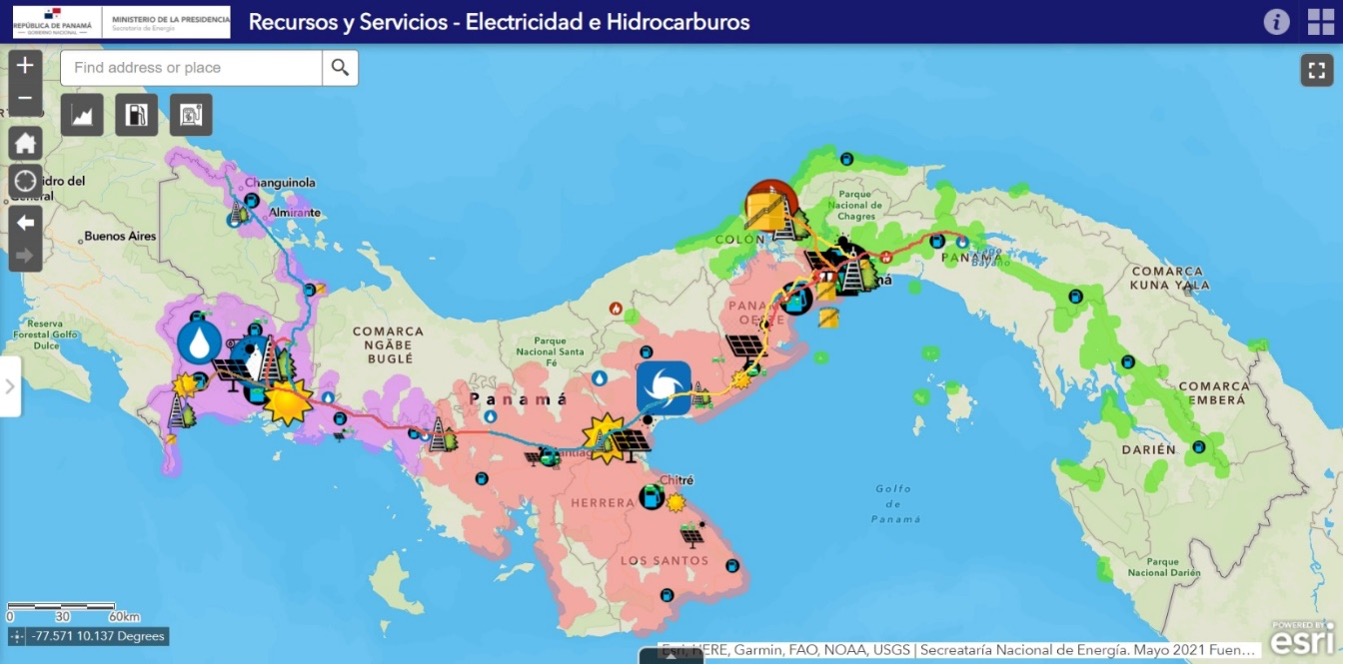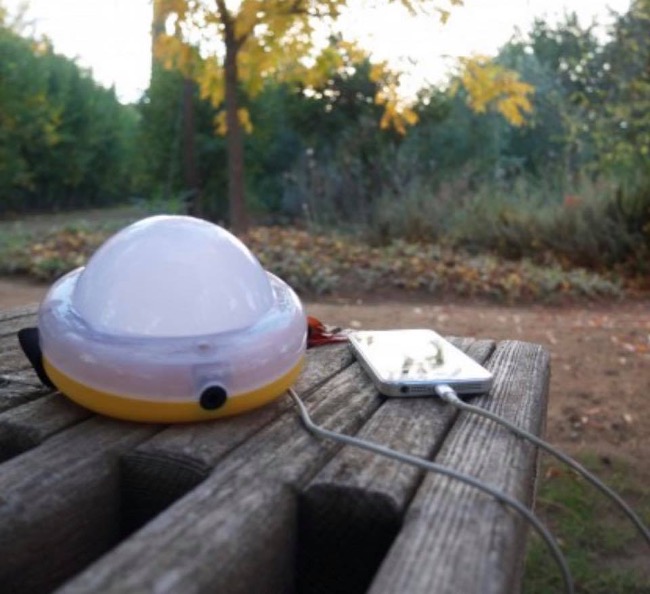Lessons about universal Access to energy in the Dos Aguas community
The last stretch of the last mile
July 13, 2022
This is the first blog article in a series by the Acceleration Laboratory of the PNUD in Panama which explores lessons on strategies to achieve universal energy access and its productive uses for a green economy.
Has it happened to you that you are on Instagram and suddenly you see that the charge on your cell phone is running out? For 97% of the population in Latin America, charging the cell phone – although it may feel like a greater inconvenience when you are far from the power outlet, is a practical action. However, for the 3% who do not have access, the reality is much more inconvenient than extending your arm.
For a leader of the rural community of Dos Aguas, in Capira, not having access to energy at home means that “one has to run around looking for a neighbor who has a panel to charge the cell phone so that the children can study, because the battery does not last long and now everything is virtual”. For another it means "ending up tired at the end of the day from washing by hand, in addition to other household chores."
These stories are added to the 770 million people in the world who do not have access to energy. Achieving the global goal of closing the energy gap by 2030 (Sustainable Development Goal 7 - SDG 7) requires enormous efforts and creativity to leave no one behind. The UNDP strategic plan 2022 - 2025 has the "moon-shot" to close the energy gap for more than 500 million people around the world, however, the challenge goes much further.
Despite the high level of electrification in the Latin American region, it is not less important. We are still talking about more than 10 million people without access - 85% of them living in rural areas. It is key that the most vulnerable are put at the center of the energy access agenda. However, the challenge goes far beyond just energy.
We know that the crisis generated by the COVID-19 pandemic, added to climate change and the disruption of global supply chains due to armed conflicts have intensified the conditions of poverty and inequality. The pace of change we are experiencing is unprecedented and to close this gap we need to learn to unlearn... and learn again from the hands of those who are closest to the problems.
UNDP Panama has opted for a rapid, green, and inclusive economic response through an energy access intervention in the Panama Canal Hydrographic Basin, with resources from the Rapid Finance Facility (RFF-UNDP). Our Accelerator Lab has accompanied part of the process and compiled a series of learnings and reflections about the universal access and the productive uses of energy.
The last section of the last mile: 93,000 families
In Panama, a country of 4.5 million people, the energy access gap is estimated at more than 93,000 families and the Rural Electrification Office and the National Energy Secretariat seek to close this gap before 2030. At first glance, this number does not seem significant, however, a large part of this population is located in the poorest and most vulnerable territories of the country and face structural development challenges beyond energy. We are talking about the last stretch of the last mile.

Illustration 1 – Energy coverage in the Republic of Panama.
And to leave no one behind, UNDP has launched the Energy Startup Plan, which contributes to the ambitious mission of closing the energy gap in Panama through a solar microgrid as a way to generate a local, green and inclusive economy in the Dos Aguas community, which is part of the Panama Canal Hydrographic Basin.
The idea draws on the Energy Transition Agenda 2021 - 2030, in particular, in its strategy of universal access and distributed management of energy, giving autonomy to communities so that they 'take energy into their own hands' and enhance their development opportunities locally.
For complex challenges, the response is community
The community of Dos Aguas understands that complex problems are not solved by a single person, nor by a single actor: "if we all join together, we take a step forward," says a community leader. Places like Dos Aguas have much to teach us, so we seek to generate learning from collective intelligence, learning together with the community through participatory workshops, social mapping and connecting with the experiences of the Panama Canal Authority (ACP), the Office of Rural Electrification (OER), the National Secretariat of Energy (SNE) and the Panamanian Cooperative Institute (IPACOOP).

Illustration 2 – The concept of collective intelligence is simple: to construct something greater than the sum of its parts, which requires humility to learn to unlearn, linking together an open number of actors and information in order to explore situations and create changes for a more desirable future. The canvas of collective intelligence was adapted by Nesta (2020).
What can Dos Aguas teach us about SDG 7 and sustainable energy access?
Access to energy does not happen in a vacuum, each community has a history, knowledge, and practices that we need to recognize, value and integrate. In Dos Aguas, its rivers, forests and lands are a core part of its identity and livelihoods. Despite having lost the relationship with Lake Gatun and Ciudad de Colon due to the new road that now connects them with La Chorrera, there are endless stories that keep this relationship and identity alive in memory and it is still the reality of other communities of the area.

Illustration 3 – Collective intelligence workshop in the community, with the first part focusing on the memory of Dos Aguas and its changes across time.
The point at which relationships with the Lago and Colon City broke is upon the construction of a road between Dos Aguas and La Chorrera in 2000, which made communities in the area closer to public services and better economic opportunities. Nevertheless, Dos Aguas continues to be in the last section of the last mile and access to public services remains limited.
Despite the weakness present in local institutions and government, the community has a strong set of community-based groups whose leaders have achieved important changes. The spirit of “struggle” and “unity” in the community reflects the organizational capacity of its people, with 9 organized groups for a population of 120 people who have built a community “handmade”.

Illustration 4 – The second part of the workshop focused on the identification of community groups, their strengths, weaknesses, and opportunities for improvement in their community management models.
Recognizing and incorporating local leadership is as powerful as the best technology, since the previous experiences, strengths, and weaknesses of these groups are a key guide to building energy management models in communities. For community leaders “dialogue, participation and collective decisions”, as well as “honesty and transparency about resources” have been important to maintain trust and unity to advance as a community. In other words, without relationships of trust there is no sustainability.

Illustration 5 – The third part consisted of drawing future scenarios with access to energy in the community
Six years ago, the Peace Corps together with Solubrite installed solar kits, which the community values very highly because the vast majority still work and do not need batteries. Although they are kits of limited capacity, they represent savings in household expenses – in addition to reducing electronic waste.

Illustration 6 – image of the solar kits found in the Dos Aguas community. Source: Solubrite
“I put the solar kit to charge during the day and I can charge my phone one time before night” commented a survey respondent, while another neighbor added “depending on the sun, if its cloudy it will charge less, if not then we’re doing well”. The people demonstrated that that they have ideas about the use of energy and while the kits are limited capacity, they are point from which to further improve electrical generation in the community.
The sustainability of energy access
Expanding the vision to the outskirts of Dos Aguas, we seek to explore where there are other isolated microgrids close to the community and their sustainability. When consulting the Rural Electrification Office (OER), the closest to Dos Aguas is Taboga Island, while the rest are in other coastal and island communities that do not have a community management model, because they are operated and managed by energy distribution companies.
Therefore, there are no examples of isolated microgrids or based on active clean energy in communities with conditions similar to those of Dos Aguas, nor of community energy management. However, we did find a disused microgrid in the community of Los Faldares, about 30 km from Dos Aguas, which was also managed by the community. However, this was diesel-based, so the high costs of energy consumption made it difficult to pay, coupled with little maintenance and limited administrative capabilities. The result was a short life of energy access under this system for the community.

Illustration 7 – Georeference to the microgrids explored in this learning cycle, the green representing the active microgrids (La Miel, Darién & Isla Taboga, Panamá), orange representing communities considering solar microgrids (Dos Aguas), and red representing microgrids not in use.
Isolated solar panels for homes are perhaps the best-known system in remote areas, we explore some cases of these systems installed in Capira (Santa Rosa and Trinidad), Panama East (Tortí) and Kankintú (Comarca Ngäbe Buglé). Most of these cases highlighted that the main reason for failure has been the lack of a community energy management model, little training and/or easy access to spare parts and technologies that are inefficient or not appropriate to the context.

Illustration 8 – Explored cases of communities with distributed energy systems through solar panels in uncertain state (orange) or disuse (red).
A look to the future
In Panama there is a high level of access to energy and there is a wide variety of technologies, products and services that have contributed to closing the energy gap in recent decades. The increasingly affordable costs and the incursion of new technologies have boosted the penetration of renewables in remote areas where it is not feasible to extend existing electrical networks. However, the Achilles heel seems to be the identification of management models, operation, and territorial administration of energy in the last stretch of the last mile.
The intervention and learning process in Dos Aguas continues, the idea of installing an isolated microgrid has been redirected towards individual solar panel systems. In part, the lessons learned from this cycle have contributed to this decision. However, the curiosity and exploration of the key elements for the sustainability of the management model of the energy system in Dos Aguas and its productive uses in the community are still ongoing and will be the story of a future blog.
The case of Dos Aguas also fuels the global campaign of the “Discover and Implement” Accelerator Laboratories, which seeks to accelerate the closing of the energy access gap of 500 million people through the mapping of grassroots innovations, management models - financing access to energy and ethnographic perspectives to show alternative paths to achieve this ambitious goal. Learn more and participate in this mapping exercise by entering this link.

 Locations
Locations